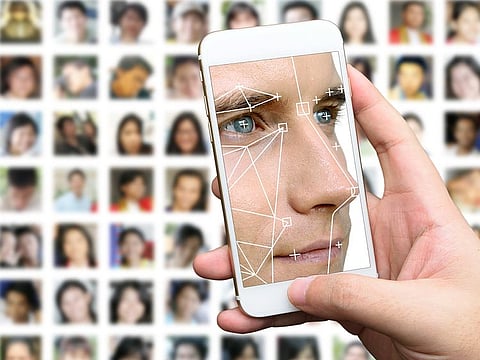Face the future: 800+ arrests and counting, via facial recognition
The many uses (and risks) of live facial recognition, and why it has kicked up debate

From unlocking smartphones to finding long-lost pets, facial recognition technology is everywhere — and it’s only getting smarter.
But like any cutting-edge tech, it has its pros, cons, and downright peculiar applications.
Smiling for the camera: The benefits
Facial recognition makes life easier. It’s a digital key for your devices, replacing passwords you’ll inevitably forget.
Airports are loving it too — scanning your face speeds up check-ins and immigration.
Shopping malls? Some already use it for smile-to-pay transactions.
Lost someone (or something)? Facial recognition has even been used to reunite pets and families.
Convenience, security
It’s not just convenience; it’s security.
At least 500 had been arrested in the UK using the system, and another 300 impersonators were flagged down at US airport borders.
Banks and online platforms use it to safeguard your accounts. Law enforcement agencies can track suspects or find missing persons, giving families hope and criminals no place to hide.
For example, London’s Metropolitan Police is making waves with its use of live facial recognition technology.
In a dramatic surge, London's Metropolitan Police in 2024 unveiled an unprecedented reliance on LFR technology. Between January and August, the force deployed LFR an astonishing 117 times — compared to a mere 32 instances between 2020 and 2023, according to the Financial Times.
This massive escalation saw nearly 771,000 faces scanned over the course of five years, resulting in an 89 per cent accuracy rate.
The technology's reach proved formidable, leading to the dramatic capture of dangerous sex offenders. The technology has helped reshape the battleground of law enforcement.
Facial recognition systems at US airports identified over 300 fraudsters (in 2020 alone) who attempted to enter using forged documents, contributing to border security and counter-terrorism efforts.
Would law-enforcement agencies in other jurisdictions follow?
How it works
In a scene right out of a sci-fi thriller, vans equipped with cameras are stationed in targeted areas across the city.
These cameras scan the faces of passers-by in real time, comparing them against a pre-approved watchlist of wanted individuals. If a match is found, officers are alerted on the spot.
The numbers behind the UK live facial recognition system surveillance:
540 arrests in total, with 50 linked to serious crimes such as stalking, strangulation, domestic abuse, and rape.
Over 400 suspects charged or cautioned, highlighting the system's efficiency in leading to actionable outcomes.
The Interpol system
Launched in 2016, the Interpol Facial Recognition System (IFRS) is populated with facial images received from member countries, making it a unique global criminal database.
Developed with a powerful automated biometric software, Interpol said that its system can identify or verify a person by "comparing and analysing patterns, shapes and proportions of their facial features and contours".
Since its creation, the IFRS System has "helped to identify several thousand individuals including terrorists, criminals, fugitives, persons of interest and missing persons".
Praise and outcry
Supporters, including Metropolitan Police officials like Lindsey Chiswick, hail the technology as a game-changer for public safety.
They argue it helps "detect offenders who pose significant risks" while assisting officers in focusing their efforts on high-risk individuals.
But not everyone is celebrating. The move has sparked heated debates: advocacy groups like Big Brother Watch label the system as an “authoritarian threat” to privacy, claiming it processes sensitive biometric data — likened to a fingerprint — often without public knowledge or consent.
Legal action
The group has even initiated legal action to halt its expansion, calling for tighter regulation and transparency.
Consumer LFR gear: Privacy concerns
Recent demonstrations have showcased the accessibility of facial recognition technology. For instance, two Harvard students adapted Meta's smart glasses to perform real-time facial recognition, identifying individuals and retrieving personal information using publicly available software.
This experiment underscores the potential privacy risks associated with the widespread availability of such technology.
A balancing act
To address privacy concerns, police stress that any data of individuals not on the watchlist is “immediately and permanently deleted.”
However, critics argue this assurance does little to quell fears of mass surveillance and potential misuse.
As London pushes forward as a global leader in facial recognition, the debate rages on: Does safety trump privacy, or are these technologies a step too far in eroding personal freedoms?
Use cases
Examples of use cases for LFR system:
In general, LFR systems are effective in identifying individuals on watchlists by comparing their facial features against databases of known terrorists or criminals.
It can also help monitor crowd behaviour to detect suspicious activities, such as individuals loitering in high-security zones.
LFR is helpful in high-traffic application, such as screening travellers at railway stations/ports/airports to help authorities flag high-risk individuals in real-time.
Studies
A number of studies on the effectiveness of live facial recognition (LFR). In 2021, Jain, A.K., Ross, A., & Nandakumar, K. (2021) shared their study on Biometrics, which explored the use of facial recognition systems in enhancing public security. It highlights how real-time facial recognition technology is deployed in airports, train stations, and large public events.
Public acceptance
The expansion of LFR has sparked debates over privacy, accuracy, and potential biases. Critics argue that the technology can lead to racial discrimination and wrongful arrests.
A London-based study, published in PubMed Central, explored public responses to LFR. It highlighted that trust and legitimacy are significant predictors of public acceptance.
Concerns about surveillance and data security continue to influence public opinion.
As LFR technology continues to evolve, balancing its benefits in security and law enforcement with ethical considerations remains a critical challenge.
Sign up for the Daily Briefing
Get the latest news and updates straight to your inbox



